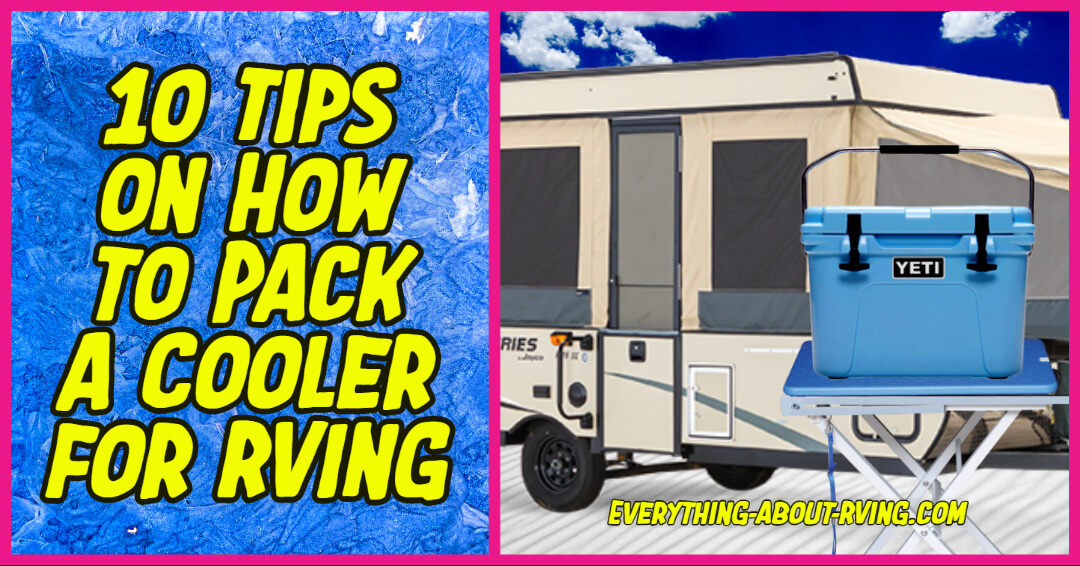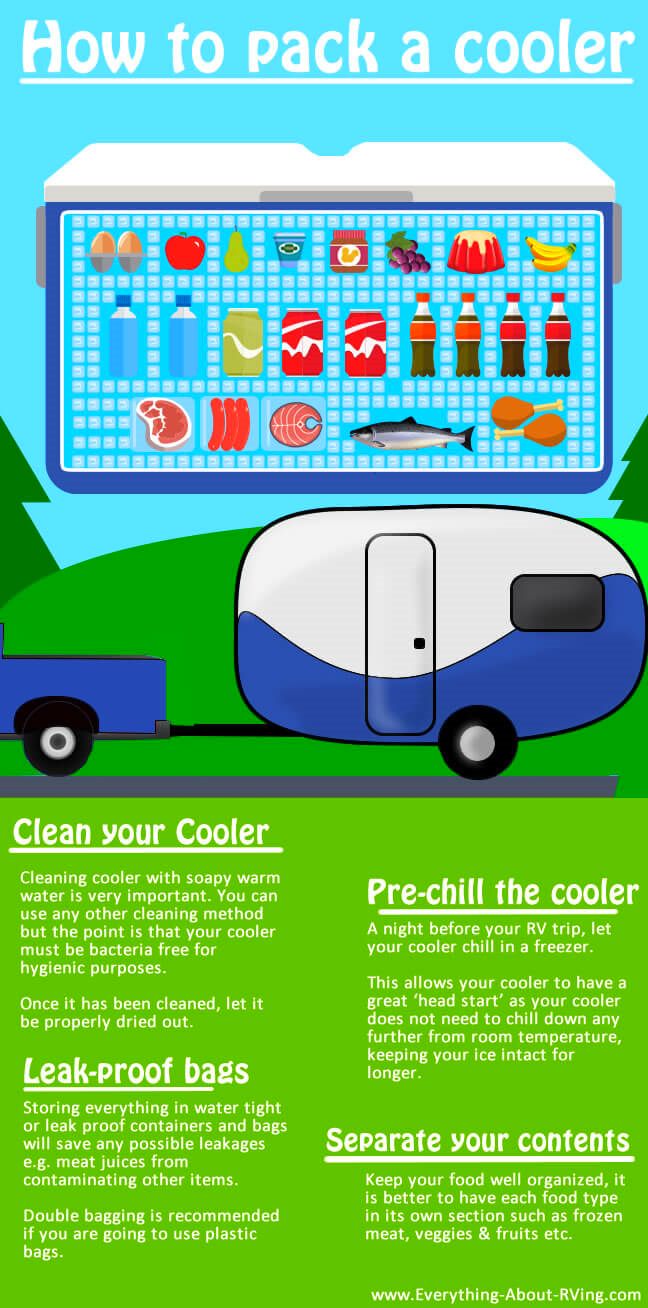10 Tips on How to Pack a Cooler for RVing
A properly packed cooler can make your RV trip wonderful
After a day, long road trip in an RV and viewing the majestic landscapes from mountains to scorching hot deserts, taking a break for a picnic is well deserved. The RVer's nightmare is to expect a pleasant picnic only to find lukewarm beer cans and soggy sandwiches suspended in melted ice inside your Cooler.
Knowing how to pack a cooler will help you use your Cooler to its greatest potential, without the worry of ice melting rapidly. Every one of us wants to escape from our busy boring life on weekends to explore the world around us. A properly packed cooler can make your RV trip wonderful
Fortunately, this nightmare can be avoided with 10 simple steps on how to pack a cooler for RVing.
10 Tips on How to Pack a Cooler for RVing
When you plan an outdoor trip, properly packing a cooler can keep your food fresh, healthy, safe & tasty longer and it also minimizes the chances of food contamination and food poisoning.
Here are the 10 tips on how to pack a cooler for RVing.
1. Quality of cooler matters – Know your Cooler
An important factor in improving the quality of ice retention in your cooler is to know your cooler capabilities. Unfortunately, not all coolers are made the same, quality matters. Hard, thick, and high-quality coolers like Yeti Coolers are much better than off-brand coolers at keeping your food cold for a longer time, due to their better insulation.
Knowing your cooler’s retention time is a good way to help you estimate how long you can keep your cooler's contents cold. Although different coolers have different results.
2. Clean your Cooler
Many RVers clean their cooler once a year which is a bad habit. You should clean your cooler before and after each trip.
Thoroughly cleaning the cooler with warm soapy water is very important. You want the cooler to be bacteria free. Once it is fully cleaned, it can be air dried.
The above procedure should be done before and after each trip.
3. Chill your foods and drinks
If you have plans to stay outdoors for more than two days; You should pack the cooler with frozen food and non-carbonated drinks. Packing frozen water bottles will help keep the cooler contents colder for longer.
Items like meat and fish etc. can also be frozen.
4. Pre-chill the cooler
The night before your planned trip, let your cooler chill in a freezer. This gives your cooler a "head start" as your cooler will start off cold which will also help keep its contents cold for a longer period of time.
5. Packing of raw meat and beverages
Having two separate coolers for food items and drinks is recommended. Since the drink cooler will be opened and closed more frequently than the food cooler. Your food items such as meat will stay colder for a longer period of time.
For example, beer takes up more space than raw chicken. Taking your best small cooler for meat is a good idea, so the cooler only gets opened when you need to get the meat.
But, if you don't have two coolers, you can put frozen items in Ziploc bags or other water tight container and place those frozen items in the bottom of the cooler.
6. Use of water tight or leak-proof containers and bags
Storing everything in leak proof containers and bags will help prevent any cross-contamination of food items in the cooler. You should also consider double bagging any meat or poultry that you are keeping in the cooler.
You should never trust the original store packaging of any meats or poultry. If you plan to keep those foods in the original packaging, you should put item inside a freezer bag as well.
TIP: Wrapping all the greens in separate wet paper towels before packing them into Ziploc bags will help keep them crispy.
Also, packing foods as individual servings will make chilling or freezing them easier and faster. Items such as salads can be packed as individual servings, so when you are ready to eat them, you can just add the salad dressing and eat them directly out of the container they were stored in.
7. Ice blocks or Ice cubes?
Using ice blocks in you cooler is recommended. If you use ice cubes in a cooler the cubes will have air spaces in between them, which makes them melt faster than ice blocks. Depending on the size cooler you have the ice blocks may have to be broken down into smaller pieces.
8. Space conserving packing of a cooler
When you are packing your cooler for your trip, you should remove any excess packaging from the items you are taking. If you only need six eggs for your trip, you should cut the egg carton in half and leave the remaining eggs at home. This will also help reduce the trash that you generate while camping.
If you are only planning a day trip, you can individually pack just enough, butter, mayonnaise, etc. in the cooler. This way you don't have to pack a partially full mayonnaise jar in the cooler.
Larger fruits and veggies can be peeled and chopped and placed into small containers and they will then be ready to use whenever you need them.
9. Separate your contents
Keep your food well organized, it is better to have each food type in its own section such as frozen items, meat, veggies & fruits, unfrozen cold beverages, and condiments etc.
Labeling everything will be helpful for other family members. Masking tape can help to mark the containers.
10. Follow the “First in, last out” packing rule
If you have planned to cook the hamburger on the last day of your trip, it should be packed at the bottom of the cooler - which means the first item in the cooler while packing will be last one out at your destination. The first food items you plan on using when you arrive at your destination should be the last items that you put in the cooler.
Bottom Line
By following these 10 tips you can say bye bye to soggy biscuits and warm drinks. Hopefully one of these tips will help your cooler keep its cool on your next RVing adventure.
Do you have any suggestions or comments on this topic? You can add them to this page by using the comments section located below.




